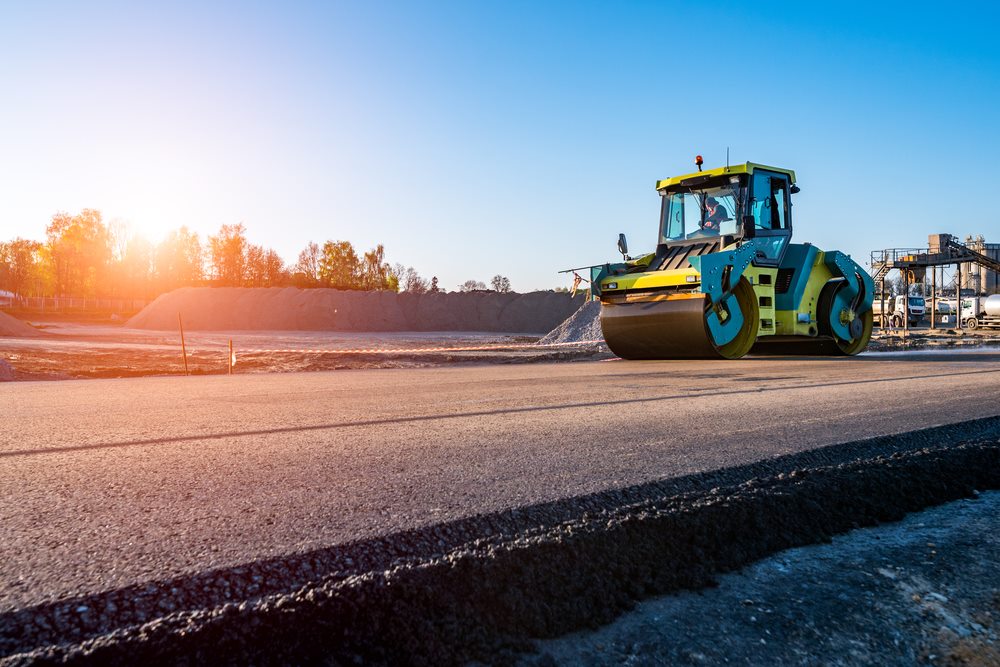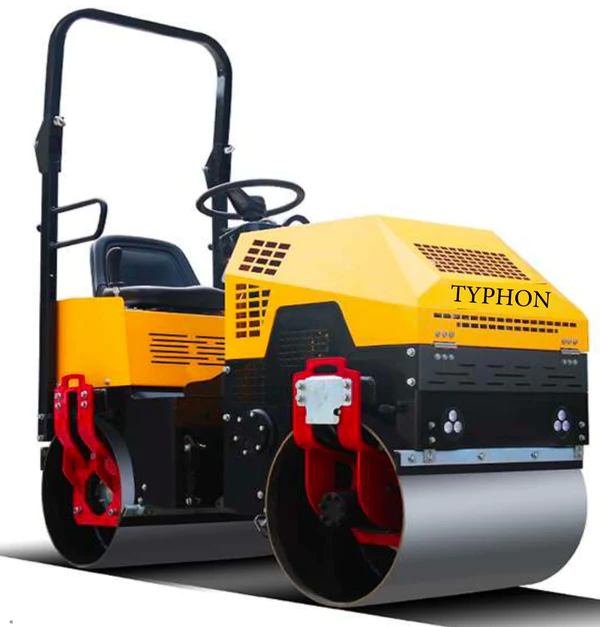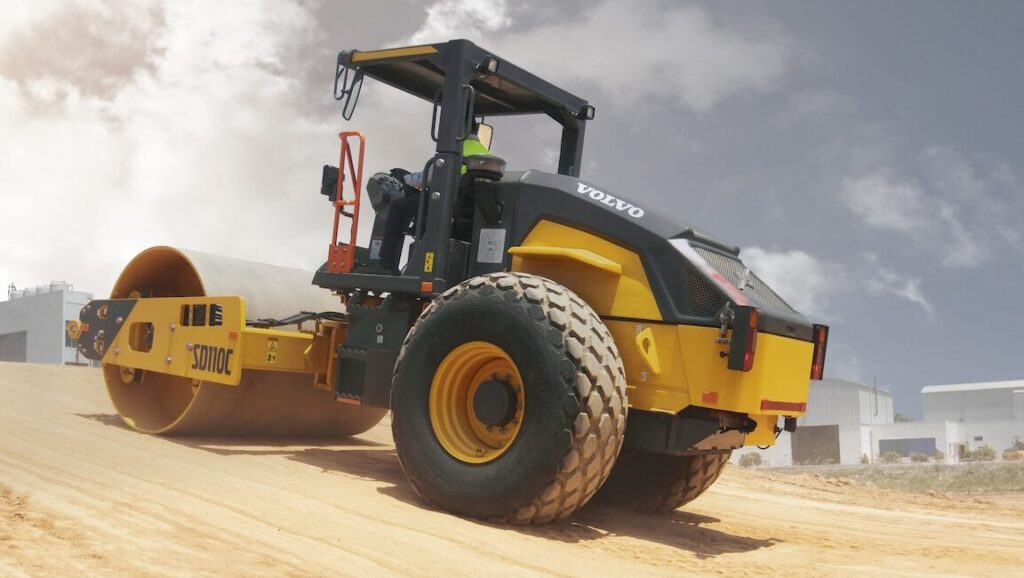Roller Compactor Selection Guide
Your Complete Roller Compactor Selection Guide: Unleash the power of your production plant that is currently dormant. This is not just a guide; it is the perfect blog which you need to follow so that you select the best roller compactor – the keystone to enhance the quality of production, to increase the throughput more quickly and at a lower cost, and to make the operation more efficient. Whether you are planning for a completely new plant or the adaptation of an already existing one, the appropriate compactor will be your support in the endeavor to success.
This blog explores the selection process, giving in detail all the important factors. We will look at the different types of compactors, their applications and the main technical specifications that you need to take into consideration.
Have you realized the advantages of the enhanced production efficiency that you want to enjoy? Let’s find the perfect solution for your roller compactor.
(I) Foundational Pillars: Core Compactor Knowledge
Be well versed with the equipment that constitutes your efficiency before the selection process.
The Compaction Engine: Understanding Roller Compactors in Manufacturing
A roller compactor is the heart of any business that aims for efficiency in the manufacturing process, for the unit is designed to compress and consolidate materials and is thus an indispensable tool in the world of pharmaceuticals and chemical processing.
Core Architecture:
- Twin Counter-Rotating Rolls: This is a machine that can roll over materials and consolidate while maintaining the pressure and the rotation.
- Material Feed System: The rolls’ positioning above the material makes the introduction uniform.
- Structural Frame: The chassis is a strong and firm part of the machine that keeps all the operational parts in it.
- Integrated Control Systems: This system is capable of automatic and manual monitoring and also of setting parameters on its own.
Operational Dynamics:
Material moves through the feed system from one roll to the other. The machine produces pressure in a controlled manner making loose input into a compact form (sheets, flakes, or ribbons). Continuous sensors which measure the roll pressure, speed, and the gap width ensure constant, stable output. The sensors are much modern than the previous ones and check the operation whenever necessary.
Brief: Roller compactors are complex machines that can make materials compact and hence quality in the manufacturing sector through a series of mechanical actions all controlled by the operator.
(II) Design Schematics: Types of Roller Compactors
The choice of roller compactor type is dependent on the effectiveness of the specific material industry and the operational goals. Your choice between static and a dynamic press compactor will determine its applicability for the given situation.
Static Rollers (The Gravitational Press):
It operates by the force of gravity. The best application involves finish of coarse particles having a polymeric mix in case the vibration is not a necessary parameter; construction and maintenance of asphalt roads; granular materials.
Vibratory Rollers (The Dynamic Force Multiplier):
It uses centrifugal forces to intensify the compaction results through the dynamic vibrating action.
Top Use: Granular soils, asphalt, and materials benefiting from particle rearrangement for enhanced density.
Pneumatic Tire Rollers (The Kneading Specialist):
Mechanism: Rubber tires in more than two rows make the effect of rubbing.
Best Use: Applying a seal on the surface, reducing the thickness of the layers of asphalt or soil to the minimum for the sake of the uniformity of density.
Specialized Units (The Custom Solution Builders):
Examples: Padfoot rollers (cohesive soils), combination rollers (merged methods), trench rollers (confined spaces), tandem rollers (versatile applications).
Best Use: These are units that are designed especially for a certain material or certain project limitations.
Brief: The use of specific compactor type that will match the given compaction energy, which in turn will meet your operational blueprint is suitable for the best outcome.
(III) Material & Application Blueprint: Ensuring Compatibility
It is of great importance that your materials and the compactor of your choice are well-matched.
Soil & Particulate Material Topography:
- Cohesive Soils (Clay, Silt): For the penetration and kneading of the soils, padfoot rollers are necessary. Moisture control and multiple passes are key.
- Sandy/Granular Soils: Use of the smooth drum roller is the most appropriate method to distribute pressure uniformly to the particles and interlocking them.
- General Consideration: Soil/material type stipulates pass count and compaction energy.
Asphalt & Paving Schematics:
- Process: Key factors for pavement construction are material temperature, lift thickness, and ambient conditions.
- Sequence: More often than not, the rollers remain in static form for the initial breaking, get switched to the vibratory state for the intermediate part, and then get back to the static mode for the completion of the work.
- Modern Integration: Technologies like i.e., Intelligent Compaction offer direct measurement (in-situ) via GPS for specifying the required density online without any calculations.
Brief: Tune upon roller compactor specifications the nature of the material. Differing sets of measures must be applied to another, mainly the comparison between earthworks and differentiated asphalt mixes to secure and retain the anticipated level of quality.
(IV) Project Scale & Dimensions: Sizing Your Solution
The situation as to whether machine size matches project magnitude holds the key to the optimal exploitation of the equipment.
Equipment Sizing Strategy:
- Small-Scale Projects (e.g., residential driveways, small warehouse floors): Small and medium-sized roller compactors are light, cost-effective, and have good mobility so they can handle such kinds of work.
- Large-Scale Projects (e.g., major manufacturing facilities, industrial complexes): The strong, robust, and mainly motor-driven roller compactors are active with a capacity that can reach the limits of the entire area of work.
- Medium-Scale Operations: Equipment that can manage a broad spectrum of jobs while being flexible and easy-to-use is the best choice here.
Factors Influencing Size Selection:
- The number of units of the products made each day
- The area and the way the workers are able to get the job done
- Material handling capacity
- Storage and maintenance infrastructure
- Transportation and logistics
- Operating cost-benefit analysis
Risks of Mismatched Sizing:
- Oversized for Small Projects: High operational costs, a decrease in flexibility, storage capacity problems, more difficult maintenance.
- Undersized for Large Projects: Extended production period, quality variation, more labor required, lifetime of the equipment cut short.
Brief: Choose the right size of the compactor according to your project’s size. Small units for confined tasks, heavy-duty machines for large areas – finding this equilibrium will lead to both the highest efficiency and the overall lowest cost.
(V) Operational Efficiency Framework: Key Performance Levers
Keeping operational elements under control results in maximum performance.
Surface & Material Interface:
- Particle Uniformity: The uniformity of the material particles ensured by the consistent granular state of the material (powders) can do away with product inconsistencies and at the same time, it can save more energy.
- Thermal Dynamics: The most suitable conditions for causing the material to flow as well as the correct temperature are the basic prerequisites for the production of the material with the right density, avoidance of poor bonding, and the saving of energy.
- Moisture Content Calibration: Proper moisture will avoid problems like stickiness of the material or the compactor’s low compression performance, the results of which will be felt both in the quality and the maintenance.
Continuous Optimization Loop:
Always keep an eye on the following various factors: the temperature of the material, the level of water content, the sizes range of the particles, and the characteristics of the material flow for your compactor to perform well.
Brief: It is a must to be watchful of the surface/materialize conditions – temperature, moisture, and particle consistency, etc. – if you want to get the best compactor efficiency and a uniform, high-quality output.
(VI) Key Technical Specifications & Long-Term Viability Matrix
Apart from the type, examine the features and factors below for the constant creation of the product’s value:
Critical Technical Parameters:
- Roll Diameter & Surface: Has an impact on the interface area and the material’s behavior.
- Compaction Force: Decides on the ability of solidifying the mix.
- Speed Settings: Together with material handling, it determines the rate of output.
Long-Term Performance Factors:
- Maintenance Regimen: Frequency, cost, and accessibility of spare parts.
- Operational Costs: As regards power consumption, one-time cost of wear parts, etc.
- Durability & Build Quality: The period of use and the capability to recover from an attack are the key elements.
- Alignment with Goals: Do the products help in the execution of the goal of increasing production, upgrading quality, or lowering costs?
Constructing Your Efficiency Future: Conclusion
The purchasing of a roller compactor is fundamental, and it establishes the starting point that will identify your company’s operational excellence. Following a certain strategy of appraising material specifications, production capacities, and specific usage scenarios against the different types of compactors (vibratory, pneumatic, static), you lay a strong base for your business to thrive.
Furthermore, take into account the aspects that are related to time, for example, the factors of maintenance, energy saving, and the overall return on investment. Your role now entails a subsequent stage; that of translating this theoretical model into a practical one. To accomplish that, one can address experts, adopt the knowledge, and most importantly, choose the right equipment that shall be one of the pillars of the manufacturing efficiency of the future.
Technical Annex & Troubleshooting (FAQs)
Q1: What is the expected operational life of a roller compactor with proper maintenance?
A: 8-10 years or 8,000-10,000 operating hours. It is very important to replace wear parts, filters, and oil, but oil (pro-active filters wear parts) is the most important part.
Q2: What do the ambient weather conditions do to the roller compactor operations?
A: Weather conditions make a great impact. It is possible that cold weather may bring on problems to the hydraulic system and fuel, while rain can e.g. lead to the oversaturation of the soil. Dryness and a temperature of 50-85°F (10-29°C) is the best condition.
Q3: What are universal safety measures for a roller compactor operator?
A: Workers need to comply with the state’s PPE regulation (hard hats, safety boots, hi-vis). The job needs to be done after necessary equipment checks at the beginning of each workday, proper lighting, hazard-free work areas, regular safety training, and the use of safety harness.
Q4: What actions are to be undertaken to reach the service life of a roller compactor?
A: Regular monitoring and checking of the machinery for any signs of problems should be done every 250 operating hours/monthly (fluid integrity, belt tension, worn or damaged bearings). There should be a major service carried out each year/every 2,000 hours.
Q5: What are the average fuel consumption numbers for different roller compactor types?
A: A Vibratory can consume as little as 3 gallons per hour up to 5 gallons per hour. On the other hand, Static needs only 2-4 gallons per hour and up to 6 gallons per hour in the case of the Pneumatic Tire model that is used continuously. It is, however, more or less not given that the fuel consumption is exactly these numbers since the usage conditions might differ.
Q6: Is it possible to use roller compactors efficiently in spaces that are locationally very tight?
A: These models such as small single drum rollers, and plate compactors are designed for limited areas, having the same if not improved efficiency as well as maneuverability.





